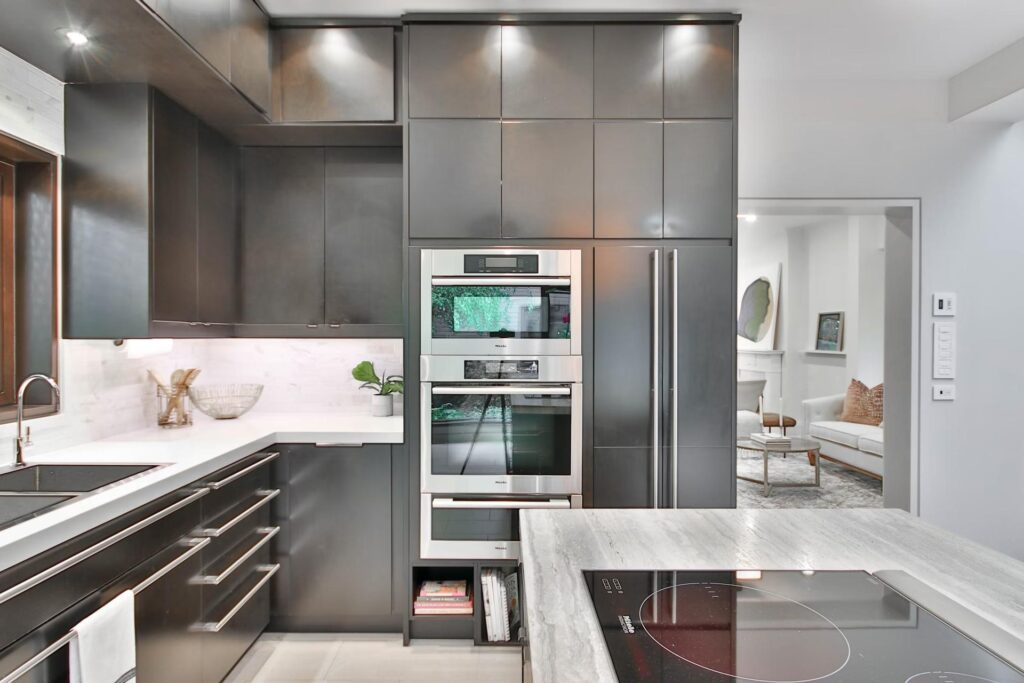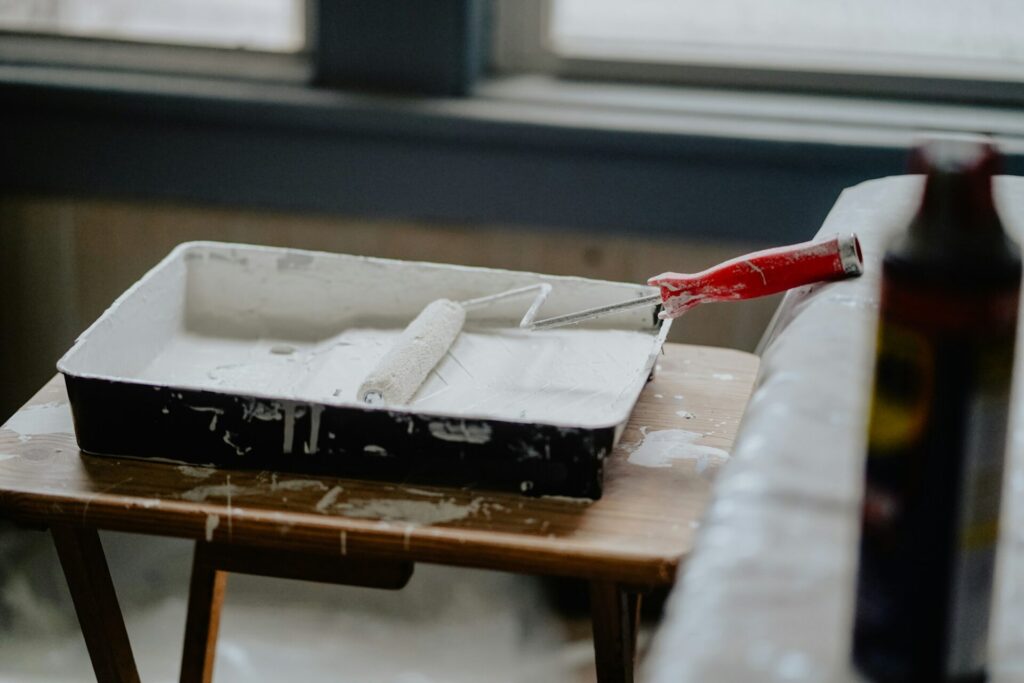
We are reader-supported. When you buy through links on our site, we may earn an affiliate commission.
Painting your home is one of the most affordable and least labor-intensive methods for boosting curb appeal. Even if you’re not looking to sell, a fresh hue revives your look and increases the resale value of your property.
You can eliminate a ton of frustration by planning your painting project carefully. Study the following painting tips and tricks so that your next project goes as smoothly as possible.
1. Plan Your Design
There’s nothing wrong with painting every wall an eggshell or ecru shade — however, there’s not much exciting about such a palette, either. Try to strike a balance between neutral classics and a bold personality.
Painting the main entryway? Consider creating a vivid focal point by painting your front door a bright yellow or green. In a living space, try experimenting with an accent wall to break up a monochrome shade.
New design trends are cropping up every year. You can warm up the feel of your home with a subtle hint of rose. You can also experiment with painting geometric patterns — like a checkerboard — on your child’s playroom wall. An amethyst accent wall can add a regal appearance to your dining area.
Whatever colors and designs you choose, make sure they reflect your personal style. You can always paint again if you need to sell, but for now, this is a home you want to feel comfortable in.
2. Try Samples on Your Wall
Even if a sample looks ideal in the store, it might look quite different on your walls. Differences in lighting can amplify certain shades, and the color of your furnishings impacts the total effect.
Before you purchase sufficient gallons to complete your project, buy a limited sample to try first. Some stores will provide these free of charge.
Are you planning on painting more than one room? The hues you choose for adjacent areas combine for a total effect. Samples will help you see how different spaces work together.
Need an example? That olive green you chose for your dining room may look stunning alone. If you paint a connected living area dark yellow, however, you risk making your house appear institutional.
3. Invest in the Right Materials
While it’s true that you can make do with a paintbrush and pan, the better the quality of your tools, the simpler it is to complete your project.
- A high-capacity roller cover means making fewer trips to the pan — leaving more rare opportunities for drips.
- A mini-hand masker makes taping off your molding a breeze over manipulating the sticky stuff with your fingers.
- If you have high ceilings, the right ladder and roller extension can make hitting upper corners a breeze.
Remember to dress appropriately on the project day. In addition to choosing old clothes, pick those with lots of pockets. That way, you save time running back and forth for supplies.
4. Tape and Cover Everything
Properly taping your molding and covering your carpet can keep an inexpensive paint project from becoming a pricey renovation.
Yes, it does take a few hours to do this correctly, but it ultimately saves time. Rushing the preparation process can lead to a mistake like getting paint on the ceiling. In the end, you’d have a much bigger paint job to tackle because of your haste.
To ensure the tape sticks to surfaces, clean them with a damp rag before applying. You can use a putty knife to apply pressure to corners. And once you do start painting, the next tip will help you avoid problems.
5. Take a Slow and Methodical Approach
There’s a curious business paradox that reads, “to speed up, slow down.” You can complete most painting projects in a single weekend, but that doesn’t mean you should rush through things.
Trying to work too rapidly results in poor quality. You could end up looking at a wall covered with depressing drips if you don’t take your time.
Work slowly and methodically and take breaks when you need them. Your shoulders and arms can grow achy from extended reaching overhead. Fatigue leads to mistakes, and taking a break when your body demands one is a top painting tip.
6. Quickly Clean Errors
The instant you drip, clean up the spilled paint before it dries. If the color lands on your carpet, blot it up with a terrycloth towel and a few drops of glycerin — don’t rub.
Olive oil or mineral spirits can help you remove paint spills from countertops and hard floors. Just be gentle so you don’t risk damaging a valuable material in the process.
Painting Tips and Tricks for Your Next Remodel
The next time you plan a project, keep the above painting tips and tricks in mind. You’ll finish your project more quickly and enjoy the results when you take a systematic approach.







